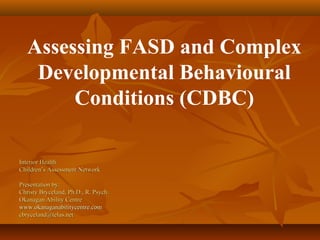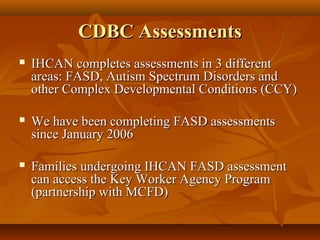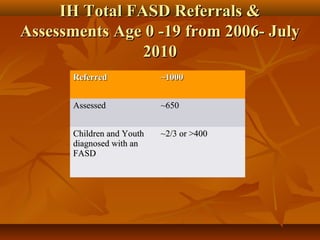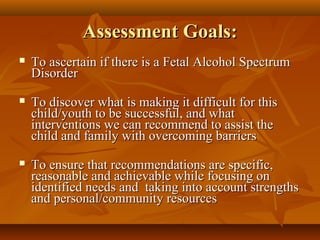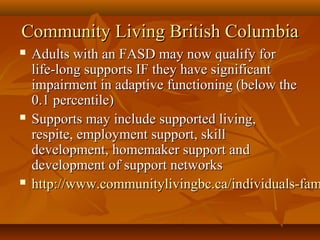This document provides an overview of assessing Fetal Alcohol Spectrum Disorder (FASD) and Complex Developmental Behavioural Conditions (CDBC) through Interior Health's Children's Assessment Network (IHCAN). IHCAN uses an interdisciplinary team approach to assess children ages 0-19 who have been referred due to concerns of prenatal alcohol exposure and impairments in multiple domains of functioning. The assessment involves evaluating the child across nine neurobehavioral domains to determine if they meet the criteria for a FASD diagnosis or other condition according to Canadian diagnostic guidelines.
